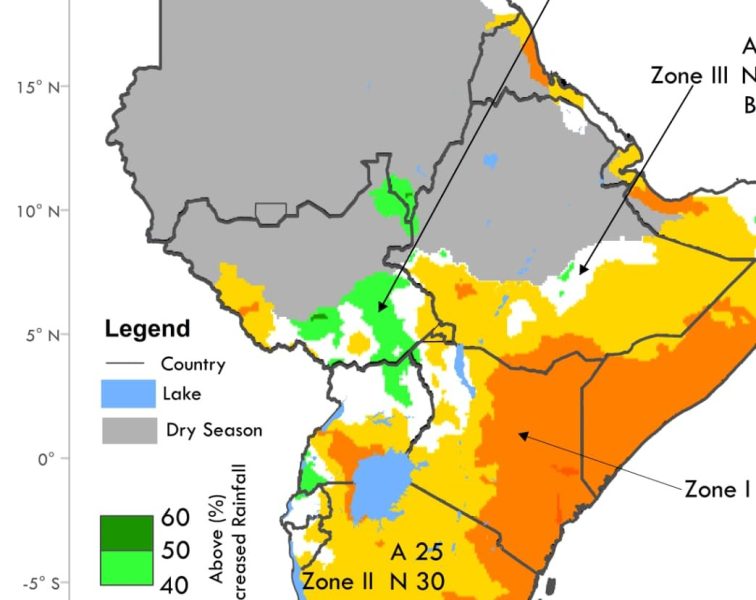
While many countries in the Greater Horn of Africa are being warned to prepare for a dry and difficult end to the year, South Sudan is expecting a different story.
A regional climate forecast released on Tuesday by the IGAD Climate Prediction and Applications Centre (ICPAC) predicts that parts of the country, particularly in the southeast, are likely to receive above-normal rainfall between October and December 2025.
This outlook offers some hope to farmers and pastoralists in South Sudan, even as countries like Kenya, Somalia, and Ethiopia face the prospect of a delayed and poor rainy season that is expected to worsen food insecurity.
The forecast further indicates that much of southern South Sudan can expect an early to normal onset of the rains, which could be a major boost for the planting season.
In another contrast to the region, which is expected to be warmer than usual, areas along South Sudan’s borders with Uganda and Kenya may experience average to cooler-than-average temperatures.
Speaking at the forum, regional leaders emphasized the need for a collaborative response.
“The Greater Horn of Africa is at the frontline of the climate crisis, said Mr. Mohamed Ware, Deputy Executive Secretary of IGAD. “Climate information must reach the last mile, and only through collaboration and early action can we turn forecasts into meaningful messages that drive timely action.”
Meanwhile, Dr. Deborah M. Barasa, Cabinet Secretary for Kenya’s Ministry of Environment, Climate Change and Forestry, noted, “bridging the early warning gap requires shared knowledge, timely information, and a united regional approach.”
Mr. Edward Muriuki, Acting Director, Kenya Meteorological Department (KMD) stated, “Early warning systems save lives only when they reach everyone, including the most vulnerable. At KMD, we remain committed to providing accurate and timely climate services that support communities to plan, adapt, and build resilience.”
For South Sudan, the forecast of more rain brings both opportunity and risk. While it could lead to better harvests and more available pasture, it also increases the risk of flooding, especially in low-lying areas.
The forecast calls on the government, aid agencies, and local communities to prepare, particularly as the impact of heavy rainfall is already being felt across the country.
Albino Akol Atak, Minister of Humanitarian Affairs and Disaster Management, had already warned that the impending floods, expected to peak between September and October, would likely displace millions of people.
He identified areas particularly at risk as Lakes, Western Equatoria, Northern Bahr El Ghazal, and Unity states, adding that the floods are also expected to affect refugees who have fled the war in Sudan.
In a recent meeting with President Salva Kiir, Minister Akol confirmed that the government is taking proactive steps to mitigate the impact of floods.
“The government is preparing mechanisms to mitigate the impacts of climate change,” Akol said, citing the construction of additional dykes and water channels to reduce water flow in the affected areas.
In response, President Kiir reaffirmed his commitment to supporting the affected populations, directing government institutions to develop critical policies to mitigate the crisis and appealed to international donors for early assistance.
This looming climate threat mixes with an already dire situation, as South Sudan faces one of its worst humanitarian crises since independence, exacerbated by both internal unrest and regional instability.

